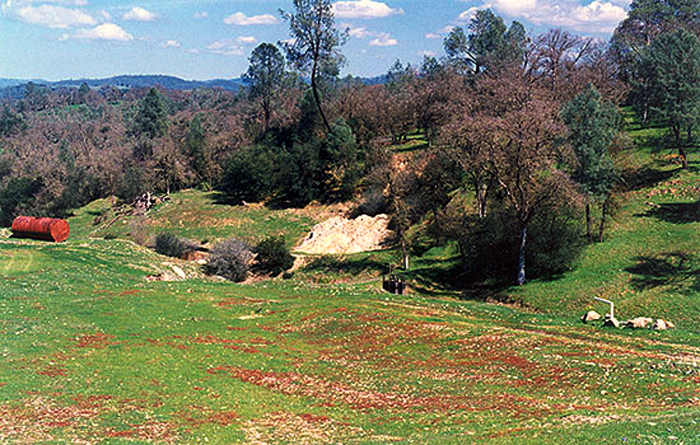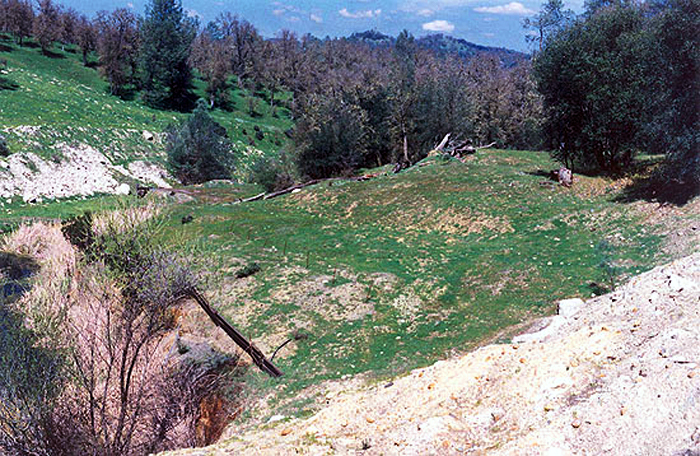


|
Top and bottom--Two views of a prime fossil leaf locality, presently situated on private property, in the lower Miocene portion of the late Oligocene to lower Miocene Valley Spring Formation. The whitish areas in both photographs represent leaf-bearing blocks of rhyolite tuff (dated radiometrically at 23 million years old) that gold miners ejected from a now abandoned drift mine. Rather common undescribed (in the professional paleobotanical literature) leaf impressions of oaks, willows, and an extinct variety of fig can be found here on those dumps of Valley Springs Formation rhyolite tuff--with the property owner's explicit permission, of course. Supplemental Valley Springs Formation fossil leaves from additional sites in California's Gold Country, western foothills of the Sierra Nevada--from rhyolitic exposures situated between Nevada City/Grass Valley to the north and Le Grange to the south--provide tantalizing paleoenvironmental indications of an early Miocene scene approximately 23 million years ago. The Valley Springs Flora is not large, yet it sheds invaluable light on an important period in mid Tertiary geologic history. Plants secured from all Valley Springs Formation localities include: undescribed pine; Nutmeg yew; Chinese maple; Boxelder maple; Oregon grape; an extinct alder; Pasadena oak; Canyon live oak; Chinese evergreen oak; swampbay; California bay; an extinct fig similar to the extant Moreton Bay fig; Western sycamore; Monterey ceanothus; Catalina ironwood (now grows in the wild only on the Channel Islands off the coast of southern California); Serpentine willow; and Western soapberry. The Valley Springs Formation is one of three fossil plant-bearing Tertiary Period rock formations one can examine in California's Gold Country, western foothills of the Sierra Nevada, along the route to the upper Miocene Disaster Peak Formation paleobotanical locality in the High Sierra Nevada, Alpine County; the other two are the middle Eocene Ione Formation and the upper Miocene Mehrten Formation. Two supplemental areas in the California's High Sierra Carson Pass region--east of Jackon (county seat of Amador County)--also yield Tertiary-age petrified wood and fossil leaves from two unnamed (in the published scientific literature) geologic rock formations of middle Miocene age. |